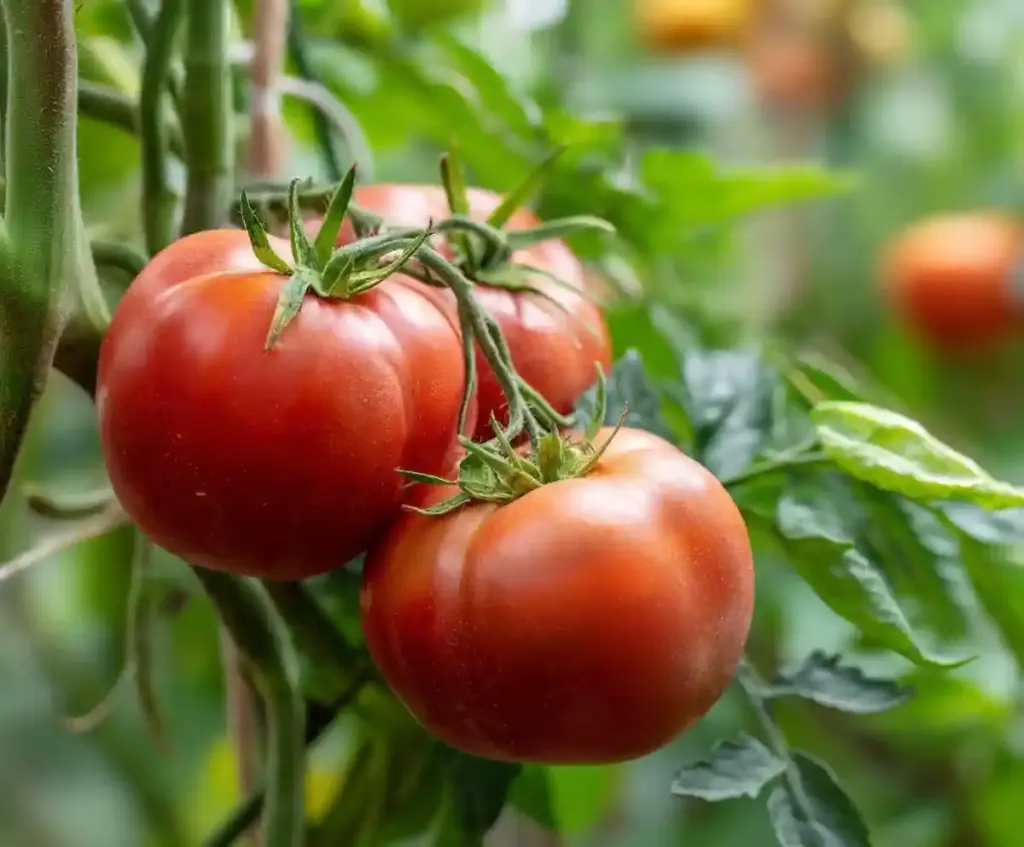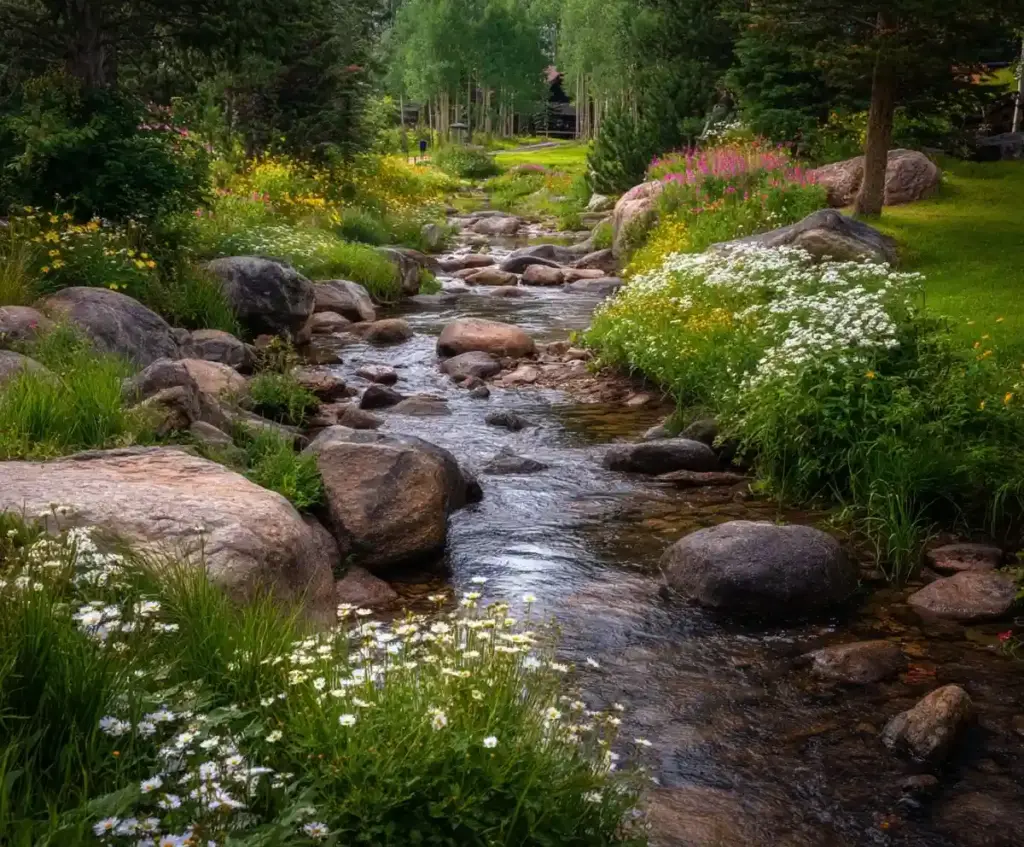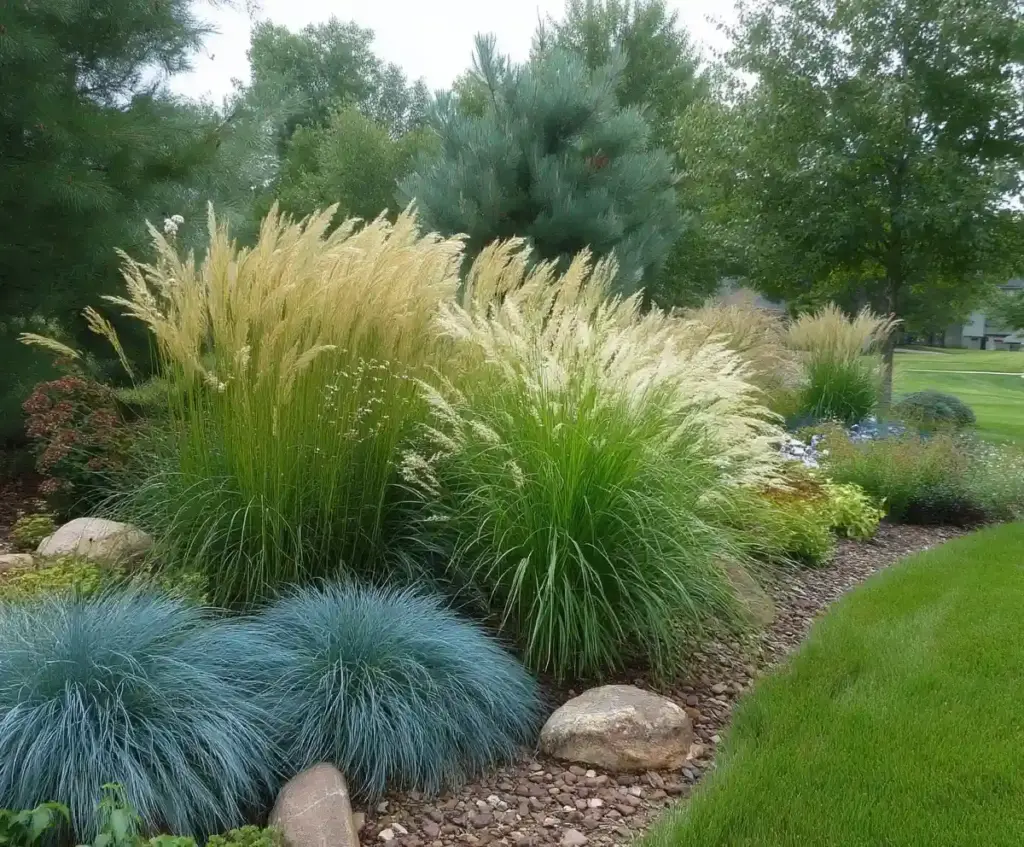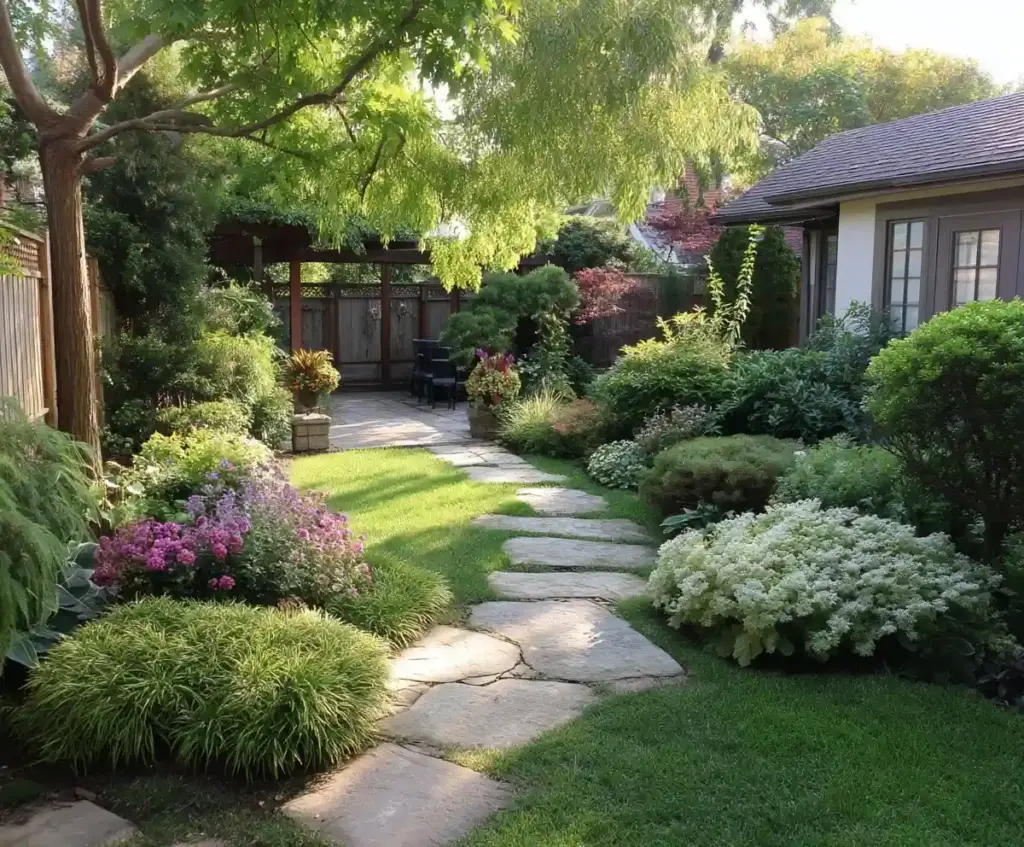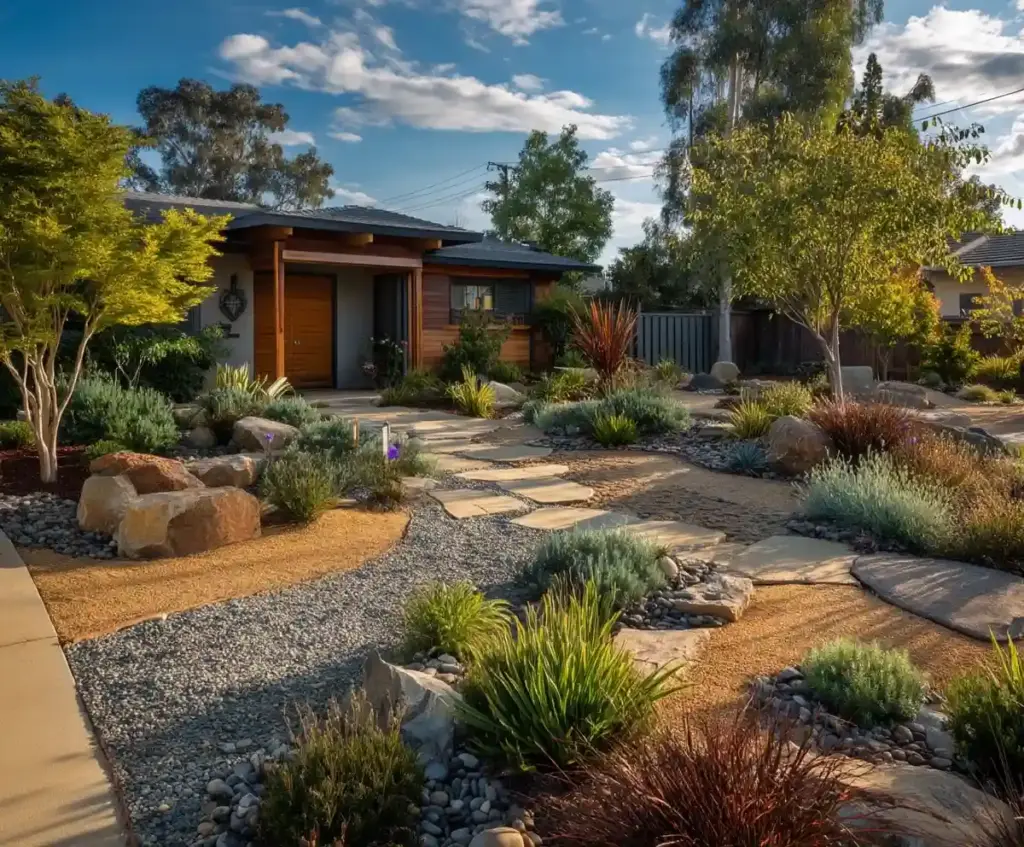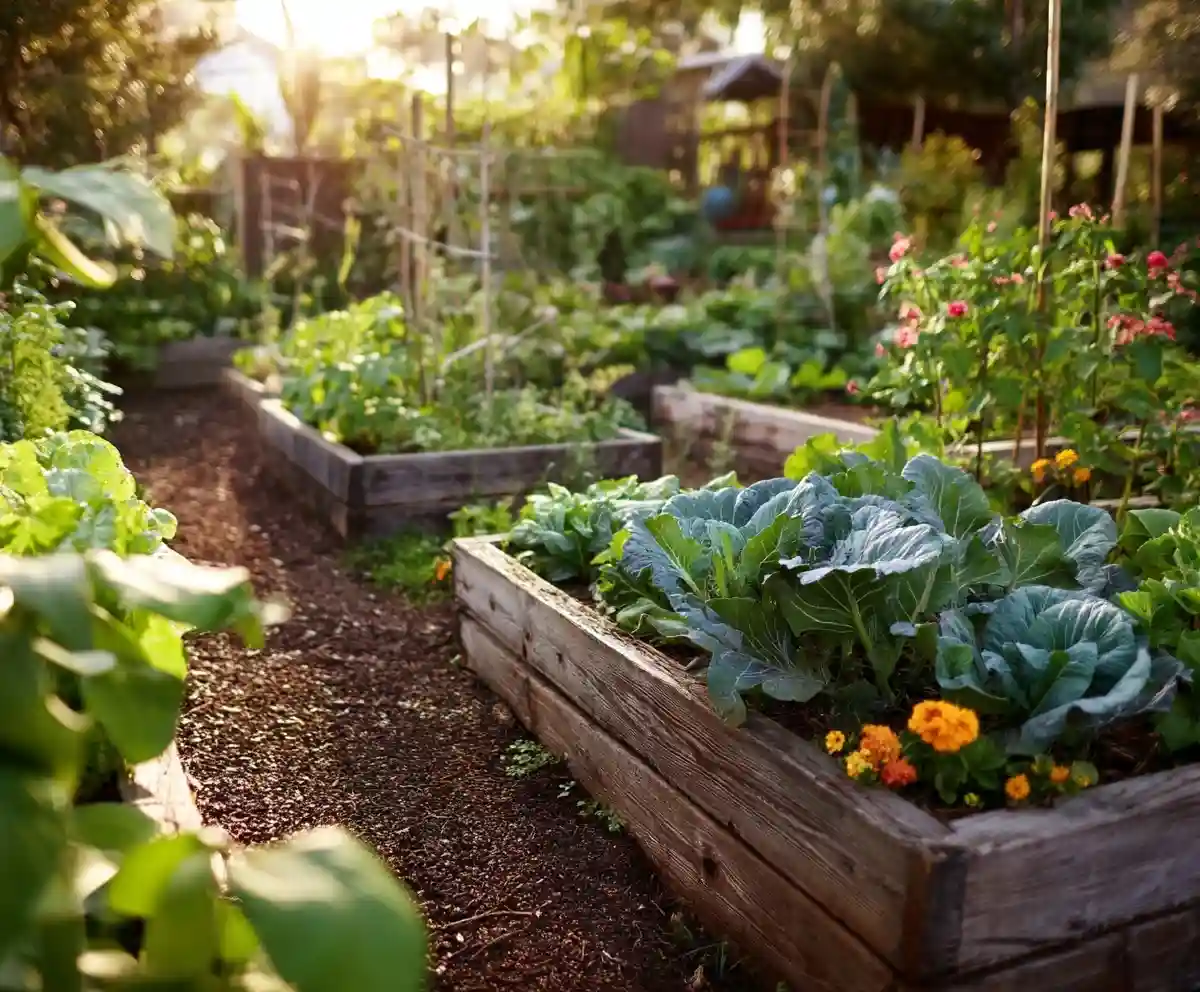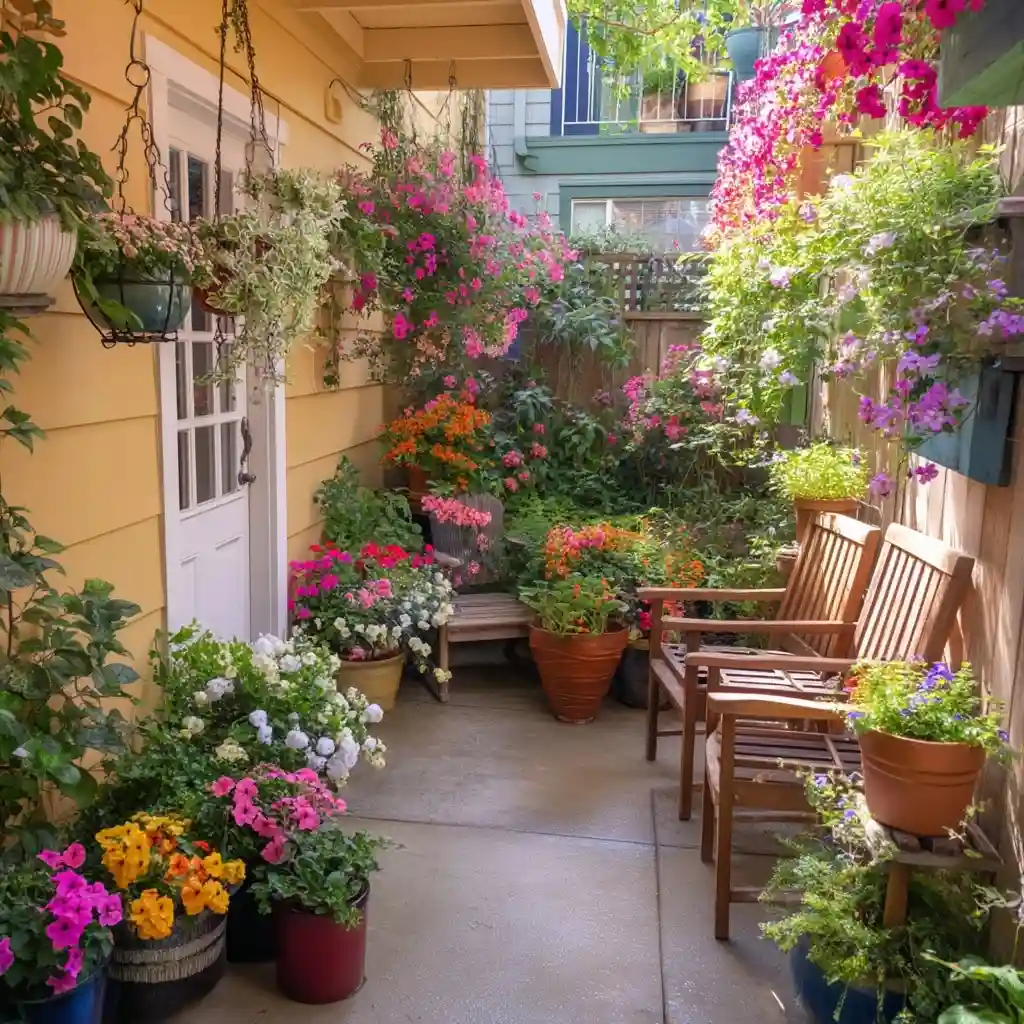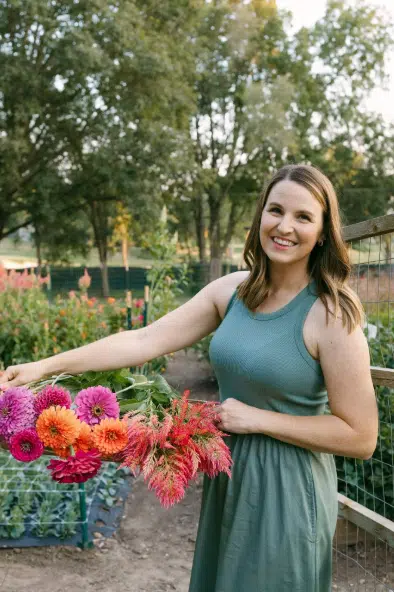Vegetable garden design is more than arranging plants—it’s about creating a space that blends beauty, function, and personal style. Whether you have a sprawling backyard, a modest side yard, or a sunny balcony, thoughtful planning can turn any outdoor space into a productive and inviting retreat. The right design choices make it possible to grow fresh produce, enjoy vibrant blooms, and have a place to relax year-round. By combining smart layouts, sustainable practices, and creative landscaping, your garden can thrive in every season while reflecting your unique vision.
Table of Contents
Transform Your Space: Garden Ideas That Work in Any Size Yard
A well-planned vegetable garden design doesn’t require a large plot of land. Even the smallest yards—or balconies—can become lush and productive with the right approach. Start by assessing how much sunlight your space gets, then choose crops and decorative plants that thrive in those conditions.
Vertical gardening is perfect for tight areas, allowing you to grow beans, cucumbers, or herbs on trellises, wall planters, or hanging baskets. Raised beds are another great option, offering better soil control and easier maintenance. In very small yards, container gardens can be moved around to follow the sun and extend your growing season.
To make the space feel larger, use mirrors or light-colored surfaces to create visual depth. Define zones for planting, lounging, and dining with gravel paths, low fencing, or pavers. A pergola or compact water feature can add charm while making the area feel complete and intentional.
Backyard Design Ideas for Year-Round Enjoyment
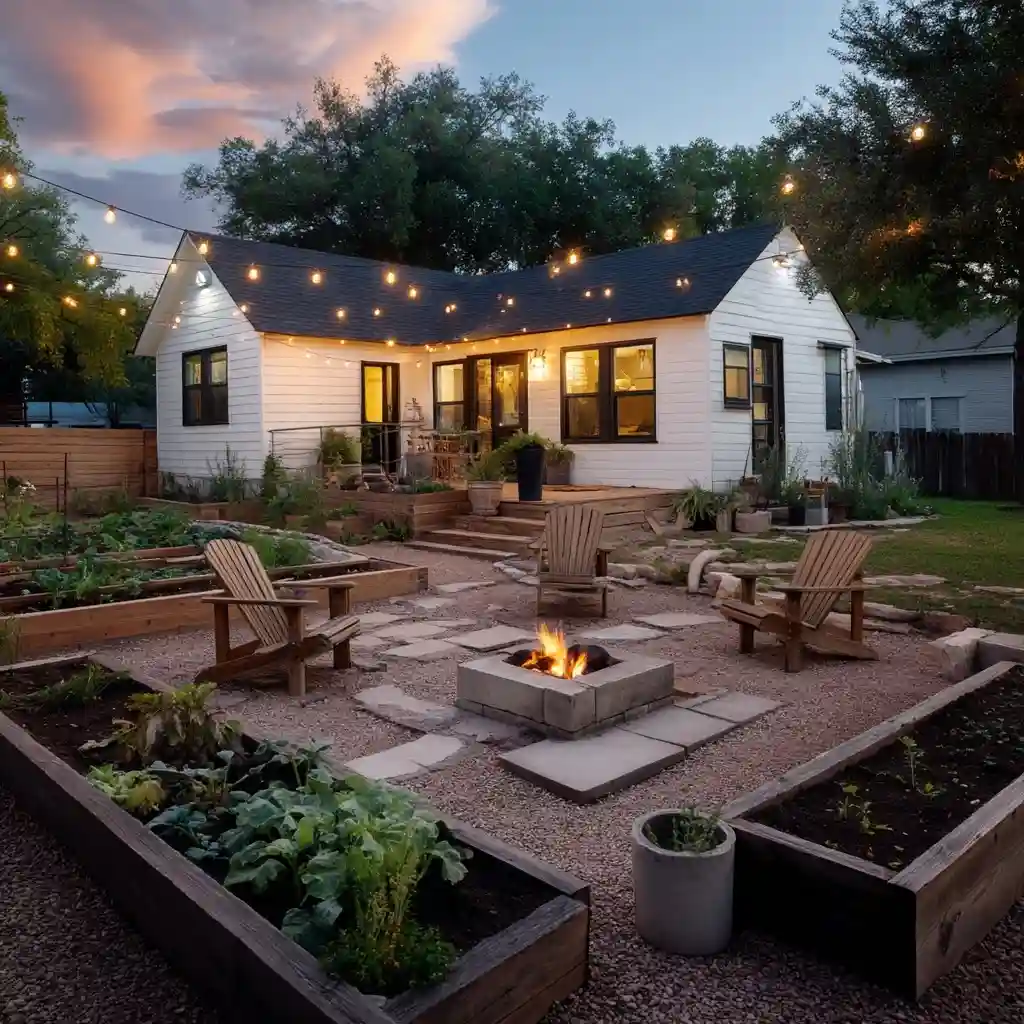
A thoughtful vegetable garden design can keep your backyard vibrant and useful in every season. Divide your outdoor area into zones—growing space, dining area, and a relaxation corner—so each section serves a purpose year-round.
For cooler months, add a fire pit or outdoor fireplace to create a cozy gathering spot. In summer, pergolas, retractable awnings, or shade sails offer comfort without sacrificing sunlight for your plants. Evergreen shrubs and winter-hardy vegetables like kale or garlic keep the garden productive even in cold weather.
Integrate lighting—such as solar stake lights, string lights, or lanterns—to extend your garden’s usability into the evening. Durable, weather-resistant furniture ensures your outdoor sanctuary is always ready for use, whether it’s a sunny afternoon harvest or a chilly autumn evening with friends.
Vegetable Garden Design for Small and Large Spaces
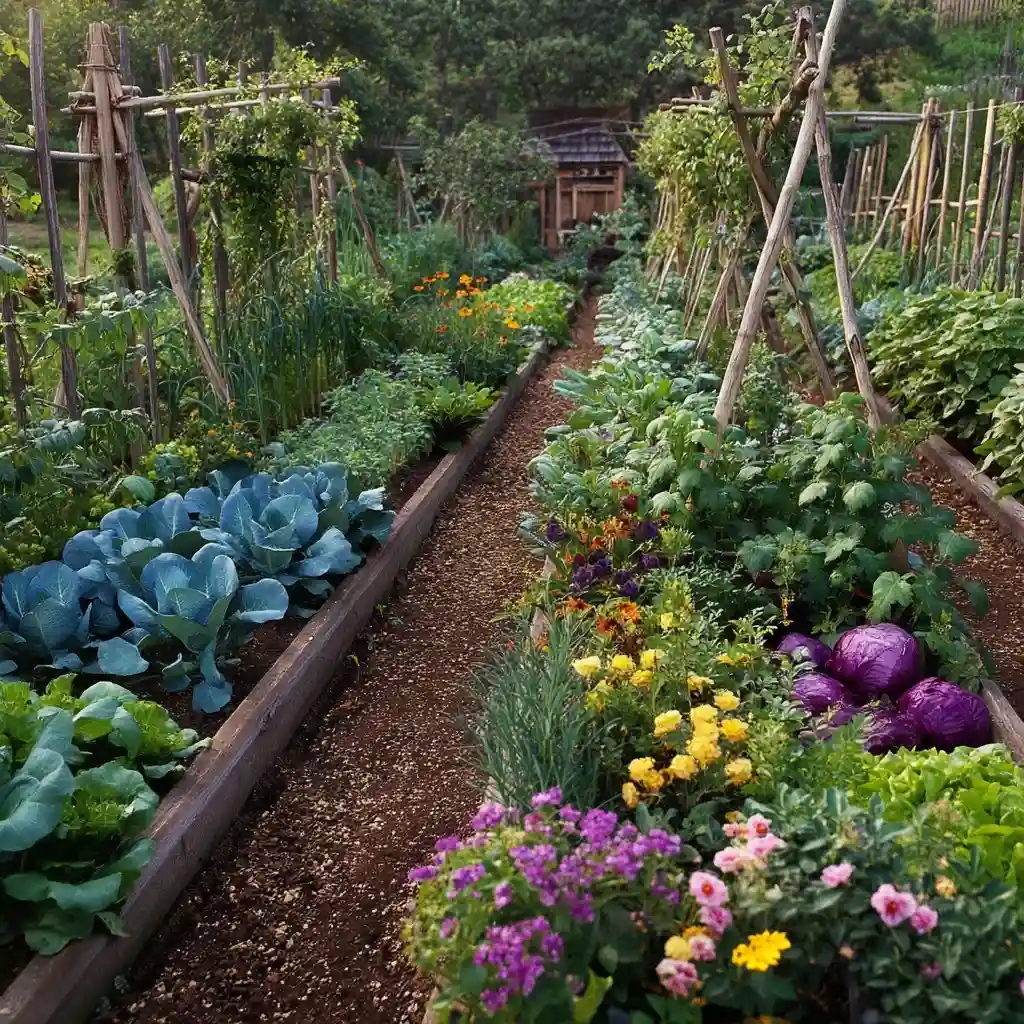
A great vegetable garden design works for both compact patios and expansive yards. The key is using the available space efficiently while keeping your garden easy to maintain.
In larger areas, arrange crops in neat rows or raised beds to simplify watering, weeding, and harvesting. Raised beds also improve drainage and soil quality, making them ideal for heavy-producing crops. For smaller gardens, containers and vertical systems are perfect for growing lettuce, tomatoes, peppers, or even strawberries without taking up much ground space.
Climbing plants like beans or cucumbers can be trained onto trellises to maximize vertical room. Mixing ornamental flowers with vegetables not only enhances beauty but also attracts pollinators and deters pests. Whether your garden is big or small, the goal is to create a layout that’s productive, accessible, and visually appealing.
Planning Your Vegetable Garden for Maximum Yield
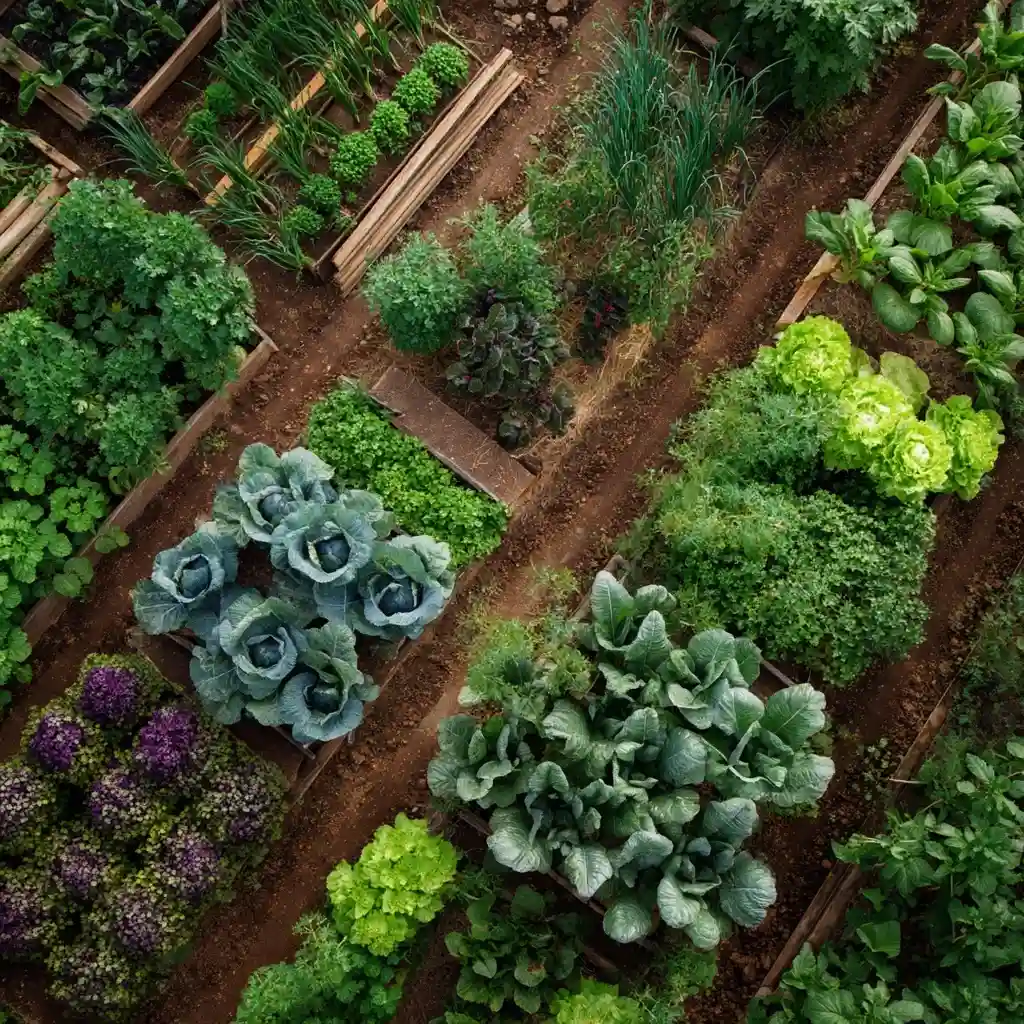
An efficient vegetable garden design begins with careful planning. Start by choosing a location that gets at least six hours of sunlight each day and has nutrient-rich, well-drained soil. If your soil needs improvement, add compost or organic matter before planting.
Create a seasonal planting calendar so you know exactly when to sow each crop. Succession planting—adding new crops as others finish—keeps your garden producing throughout the year. Rotate your crops annually to maintain soil health and reduce the risk of pests or diseases.
Pairing certain plants together can also boost productivity. For example, basil complements tomatoes by deterring pests, while carrots and onions work well side by side. Mulching conserves moisture, suppresses weeds, and helps regulate soil temperature, giving your vegetables the best conditions to thrive.
Landscaping Ideas to Enhance Your Outdoor Living
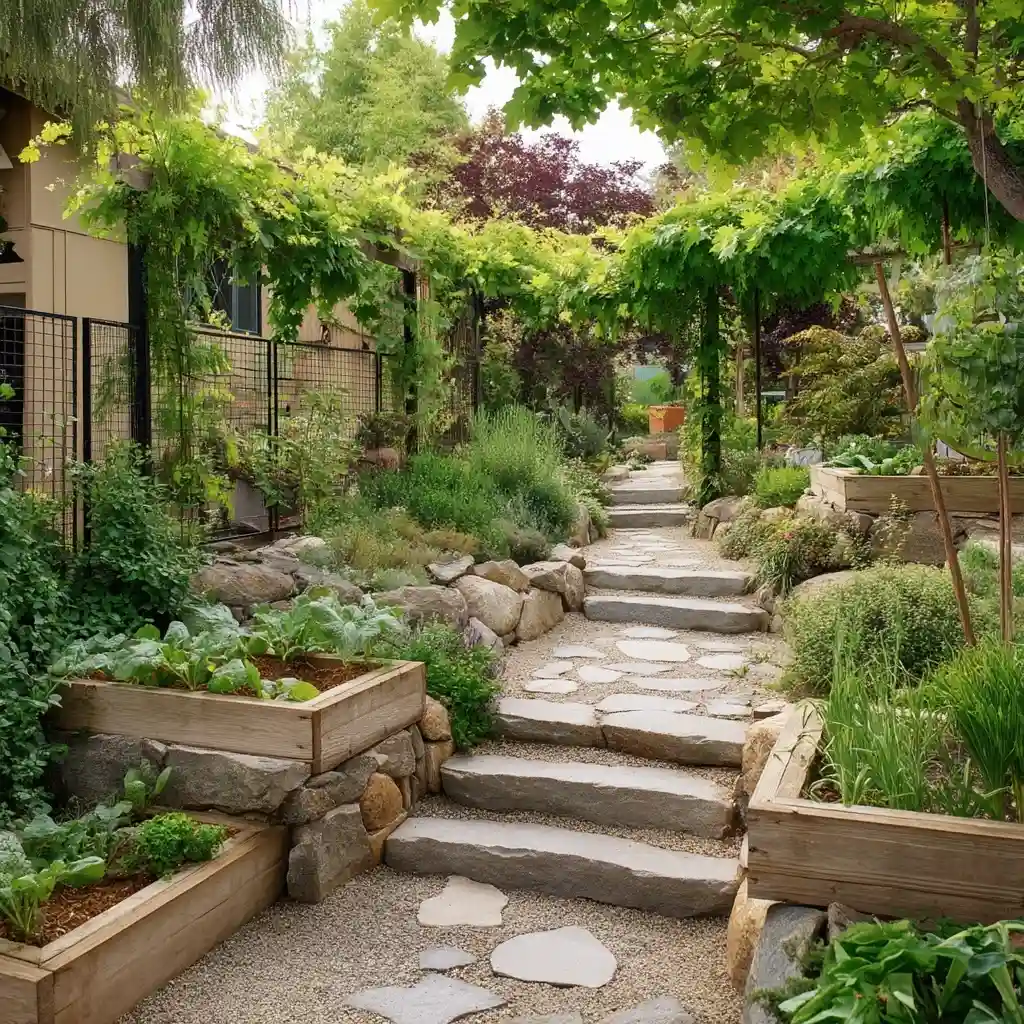
A strong vegetable garden design works best when it’s supported by thoughtful landscaping. Hardscape elements like stone pathways, pavers, or low retaining walls can define different areas of your yard, guiding movement and adding structure. Planting beds filled with seasonal flowers, climbing vines, and layered shrubs soften these features and create a welcoming atmosphere.
Incorporate native plants or drought-tolerant species to reduce water needs and attract pollinators. Ground covers, gravel, or faux turf keep maintenance low while still providing visual appeal. Mulch not only keeps your garden tidy but also helps regulate soil moisture and suppress weeds.
By blending texture, color, and structure, your landscaping becomes more than just a backdrop—it elevates your vegetable garden into a cohesive and inviting outdoor living space.
Outdoor Living Ideas to Elevate Your Garden
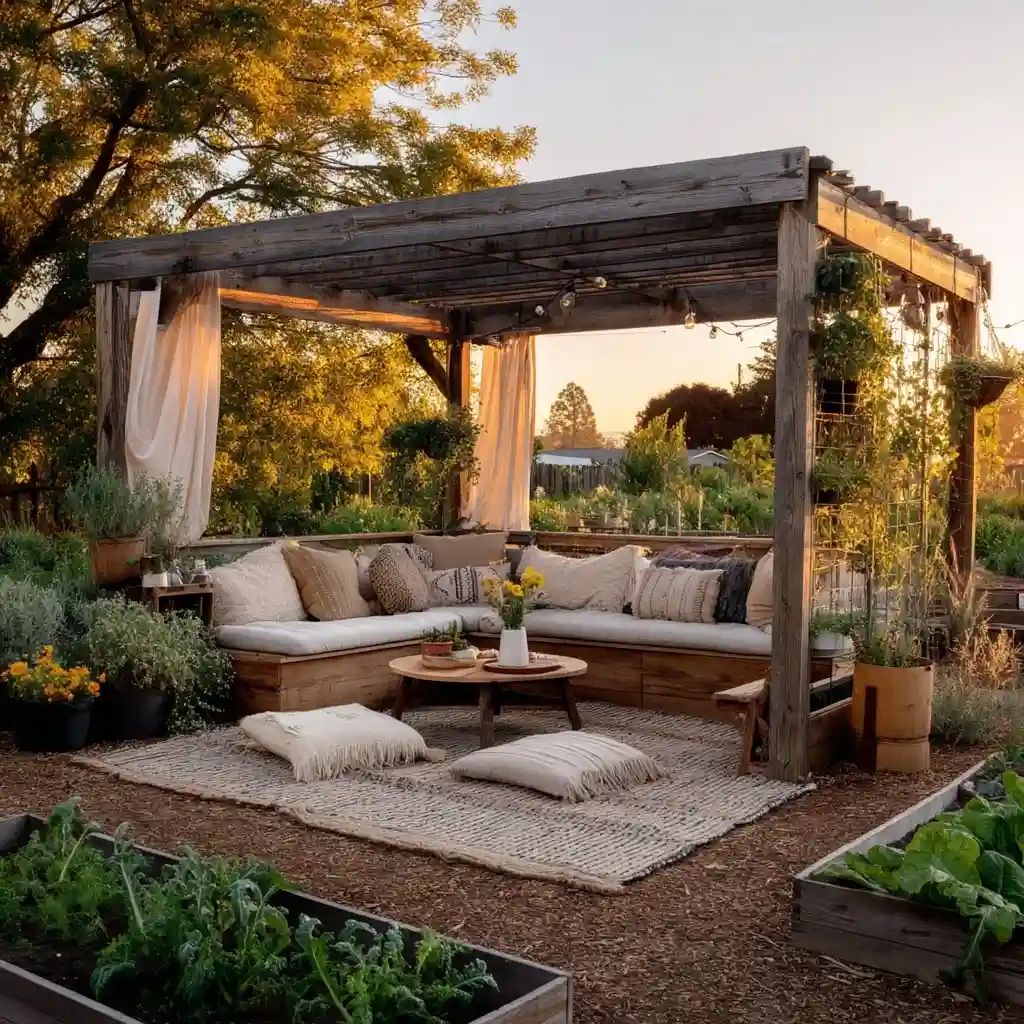
An inviting outdoor space can complement your vegetable garden design and make your yard a place you’ll enjoy every day. Consider adding a small kitchen area for preparing fresh harvests, or create a cozy lounge with weatherproof seating and soft outdoor textiles.
Shade structures like pergolas or retractable canopies provide comfort without blocking essential sunlight from your plants. String lights, lanterns, or spotlights can highlight garden features and extend your enjoyment well into the evening.
For a calming touch, include a water element such as a small fountain or birdbath. These details transform your garden into a multi-sensory retreat—where the scent of herbs, the sound of water, and the sight of ripening vegetables create a space that’s both beautiful and functional.
Stylish Front Yard Garden Ideas
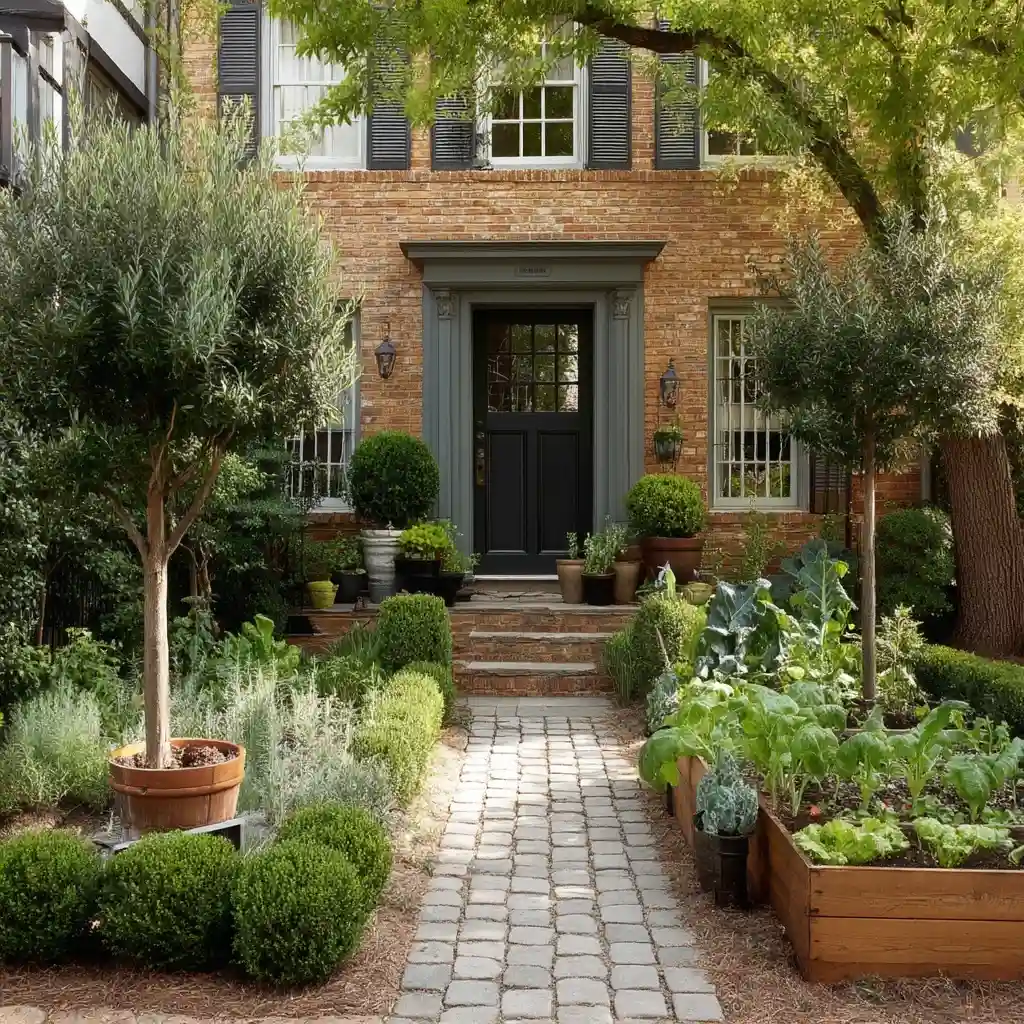
Your front yard can reflect your personality while enhancing your vegetable garden design. Even if the primary growing area is in the backyard, integrating edible plants into your front landscape adds charm and practicality.
Create structured pathways with pavers or stone, and frame them with symmetrical planting beds. Mix flowering shrubs with ornamental kale, rainbow chard, or compact tomato varieties for a blend of beauty and utility. A focal point—such as a decorative tree, fountain, or trellis—draws the eye and anchors the design.
Potted plants near the entryway add seasonal color and make the space more inviting. Subtle lighting along walkways not only improves safety but also highlights your garden’s best features in the evening.
Flower Garden Inspiration for Lush Color and Texture
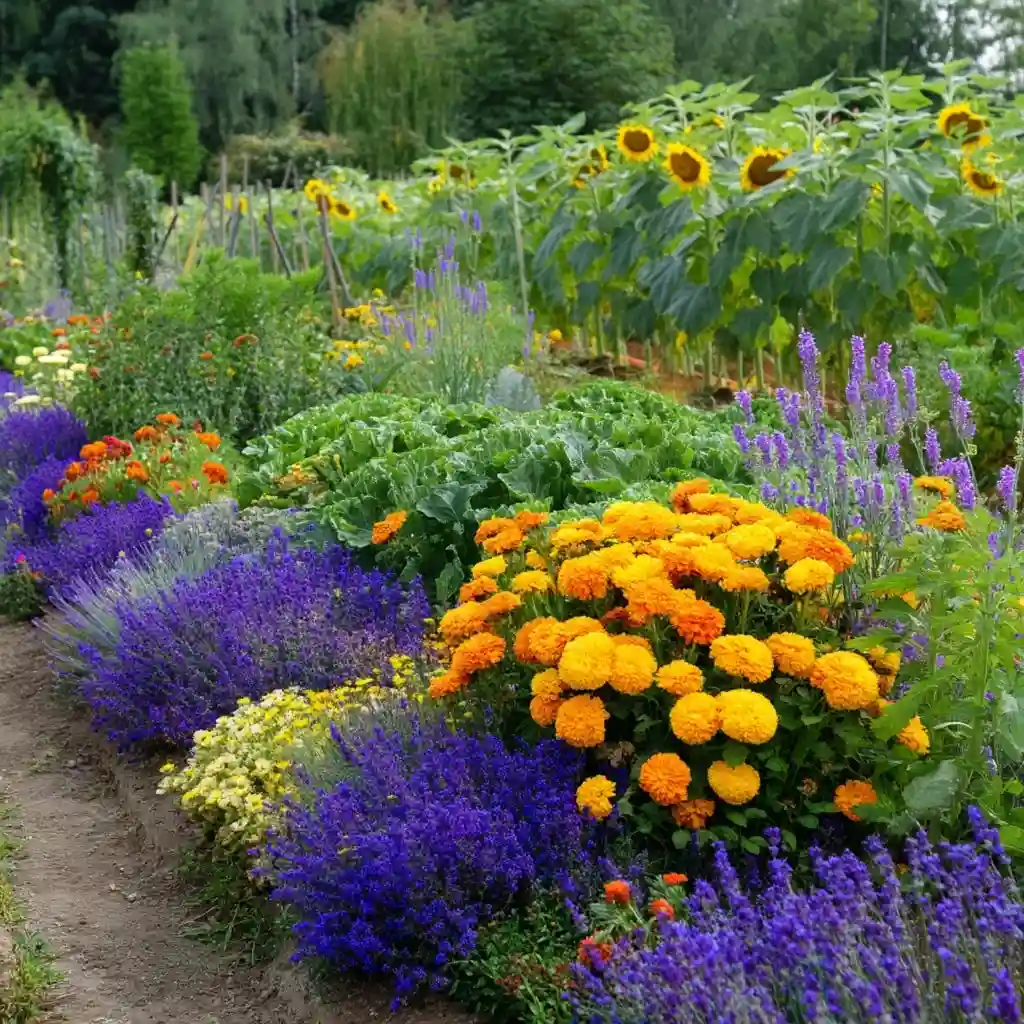
A vibrant flower display can beautifully complement your vegetable garden design by adding seasonal color and attracting pollinators. Combine annuals for bursts of color with perennials for lasting structure. Vary plant heights to create depth, placing taller blooms like sunflowers or hollyhocks at the back and shorter flowers near the edges.
Use color groupings to set the mood—soft blues and purples for a calming effect, or bold reds and yellows for energy. Interplant flowers such as marigolds, lavender, and echinacea among your vegetables to deter pests while encouraging bees and butterflies.
Adding foliage with different textures—like feathery grasses alongside broad-leaf plants—creates a dynamic, layered look. A tidy mulch layer or gravel base finishes the display while keeping maintenance low.
Incorporating Shrubs, Bushes, and Hedges
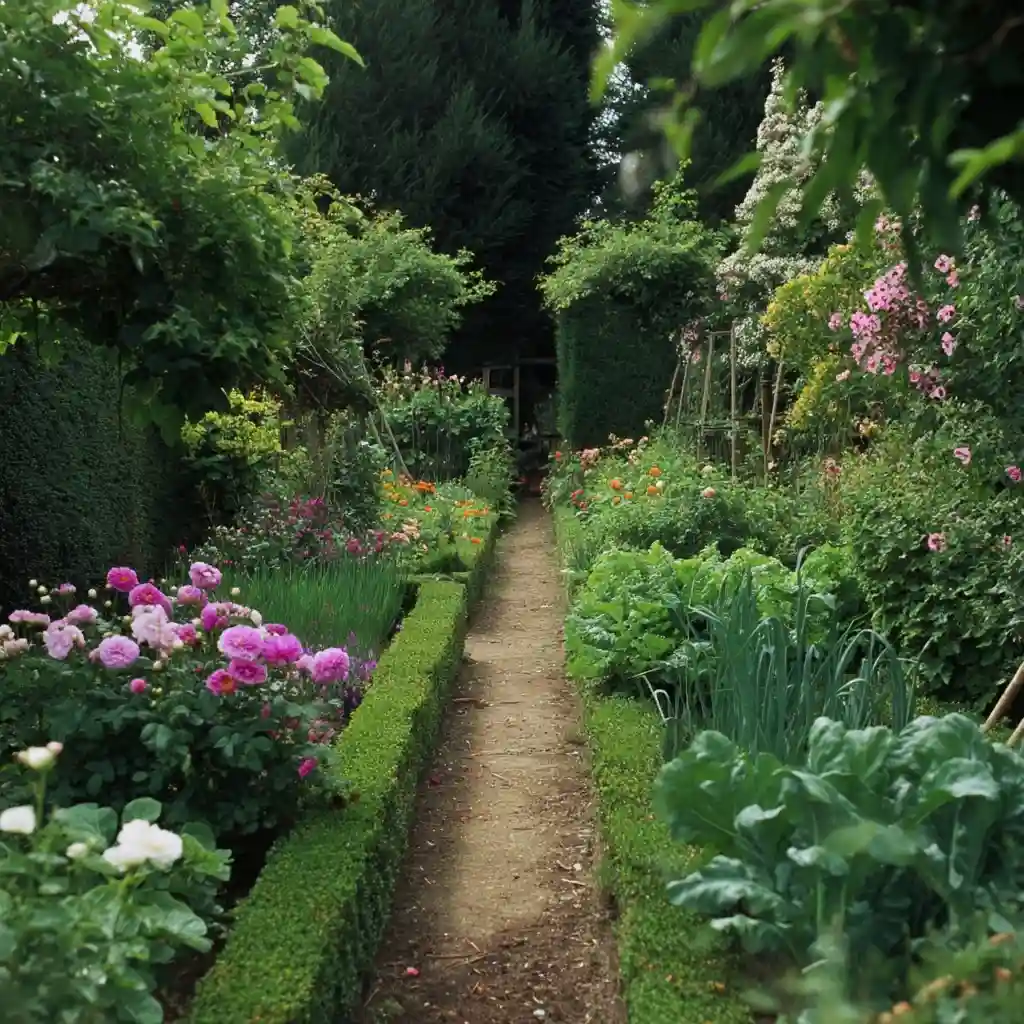
Shrubs and hedges add structure, privacy, and year-round interest to any vegetable garden design. Evergreen varieties like boxwood or yew create neat borders and define pathways, while flowering shrubs such as hydrangeas or camellias add seasonal bursts of color.
Hedges can serve as natural fences, shielding your vegetable beds from wind while creating a sense of enclosure. To soften edges, mix shrubs with ornamental grasses or low perennials. This layering effect gives your garden depth and makes transitions between spaces feel seamless.
By combining edible and ornamental plants in the same design, you can enjoy both productivity and beauty without sacrificing functionality.
Vertical Gardening: Space-Saving Solutions
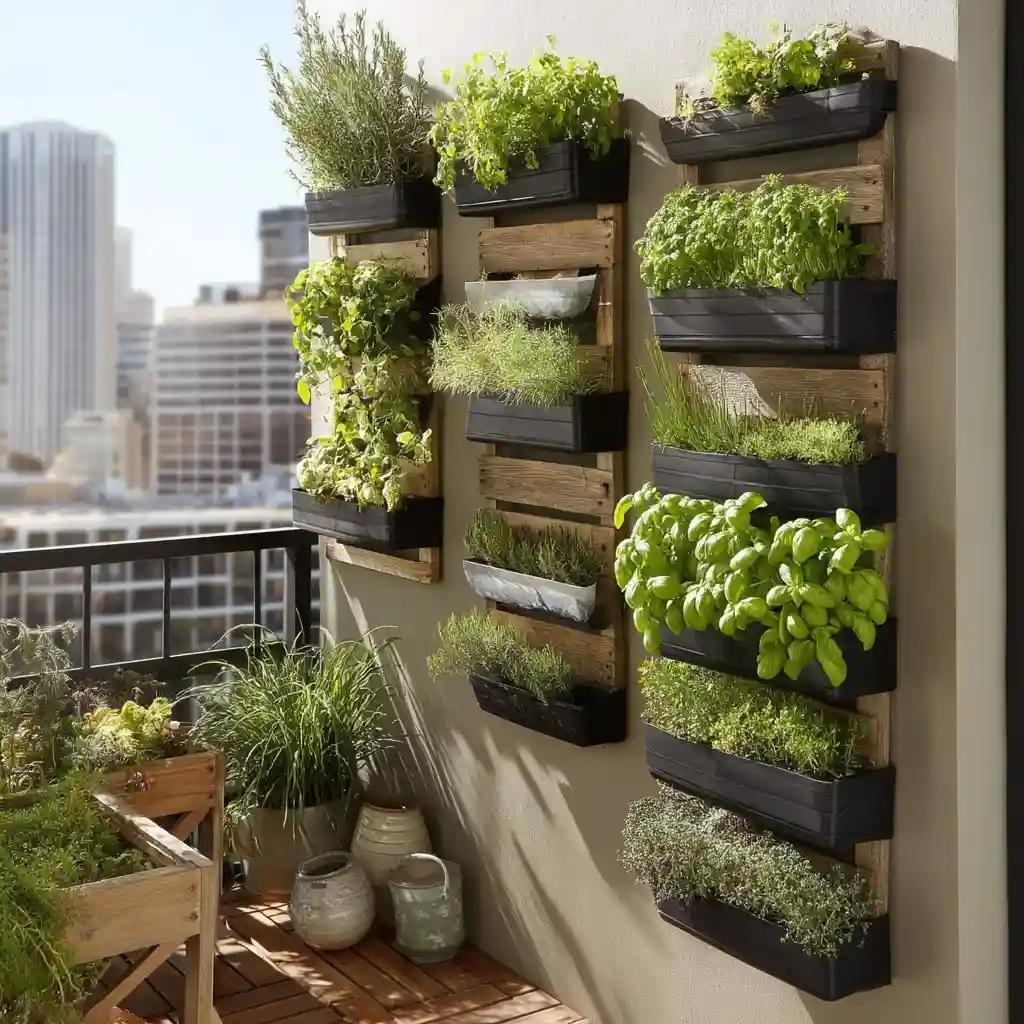
When space is limited, vertical gardening can make your vegetable garden design both practical and visually striking. Trellises, wall-mounted planters, and stacked containers let you grow vegetables, herbs, and flowers upward instead of outward.
Climbing plants like beans, peas, and cucumbers thrive in vertical setups, while compact herbs and lettuces fit perfectly in hanging baskets or tiered shelves. Pallet gardens and modular wall systems are stylish options that double as living art pieces.
To simplify care, consider installing a drip irrigation system that delivers water directly to each level. Vertical gardens not only maximize growing space but can also act as privacy screens or decorative focal points in your outdoor area.
Adding Architectural Features: Fence, Trellis & Pergola
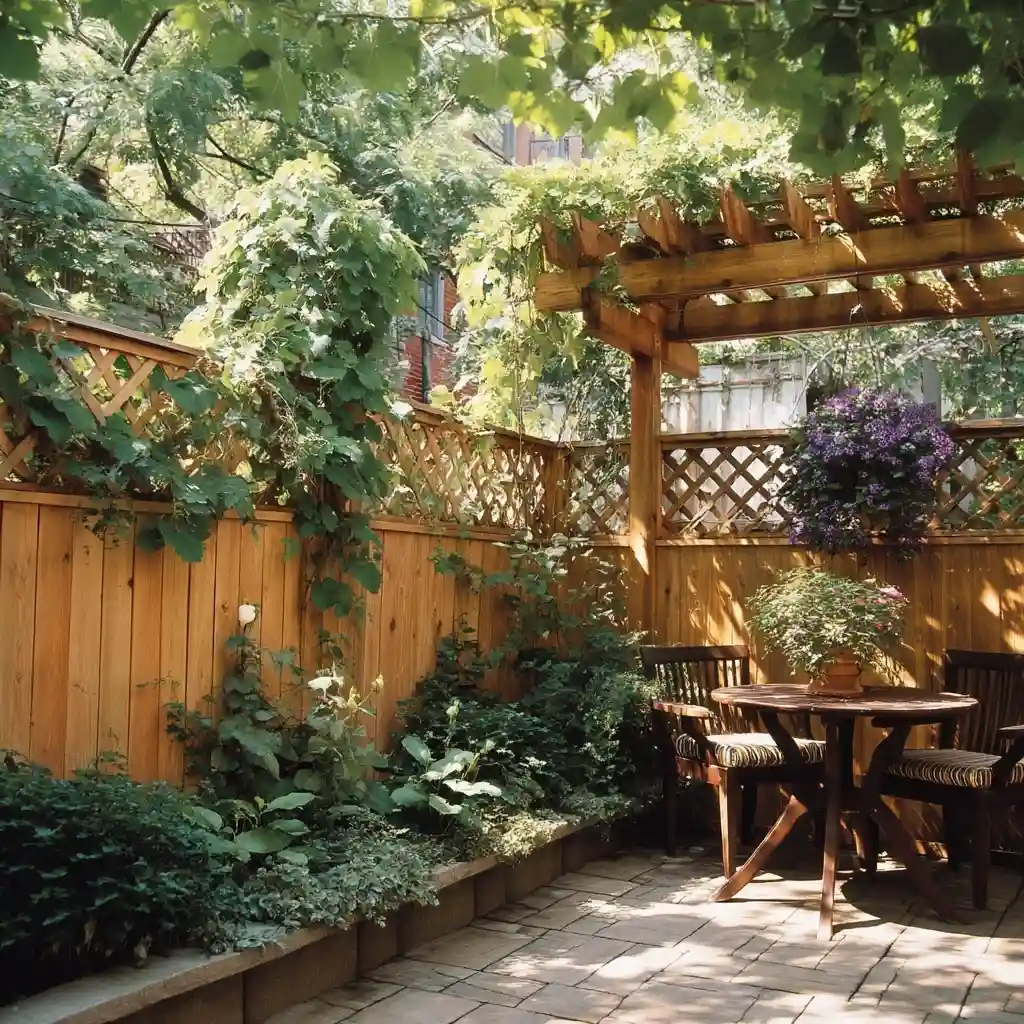
Architectural elements can elevate your vegetable garden design from functional to stunning. A well-placed fence defines your garden’s boundaries and keeps out unwanted visitors, while also serving as a support for climbing plants like beans or sweet peas.
Trellises bring vertical interest and can be positioned within beds or along pathways, creating charming entry points or plant backdrops. Pergolas provide shade for seating areas and can anchor an outdoor dining space, making your garden a true extension of your home.
Choose materials that match your overall garden style—natural wood for a rustic look, metal for a modern edge, or composite materials for low maintenance. These features not only enhance appearance but also add long-term value to your outdoor space.
Side Yard and Narrow Garden Transformation
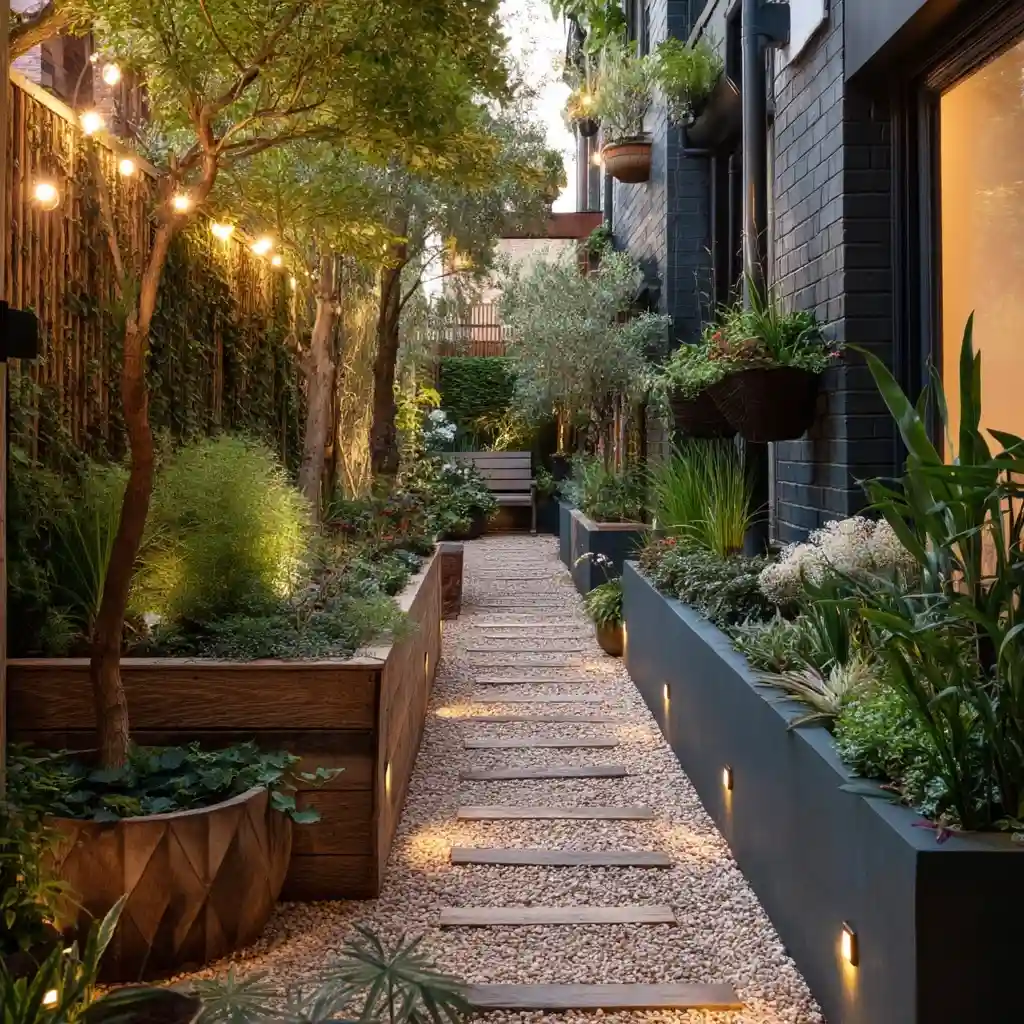
Even the smallest spaces can shine with the right vegetable garden design. A side yard often goes unused, but with a clear plan, it can become a productive and attractive part of your home.
Install a slim pathway to guide movement and make the space functional. Vertical planters or trellises against the wall are perfect for herbs, salad greens, or climbing vegetables. In shaded areas, choose crops and ornamentals that tolerate lower light, such as leafy greens or hostas.
Add soft lighting along the path for evening visibility and ambiance. By treating narrow areas as intentional garden zones, you can transform overlooked spaces into lush, useful extensions of your main garden.
Creating a Relaxing Lounge Area in Your Garden
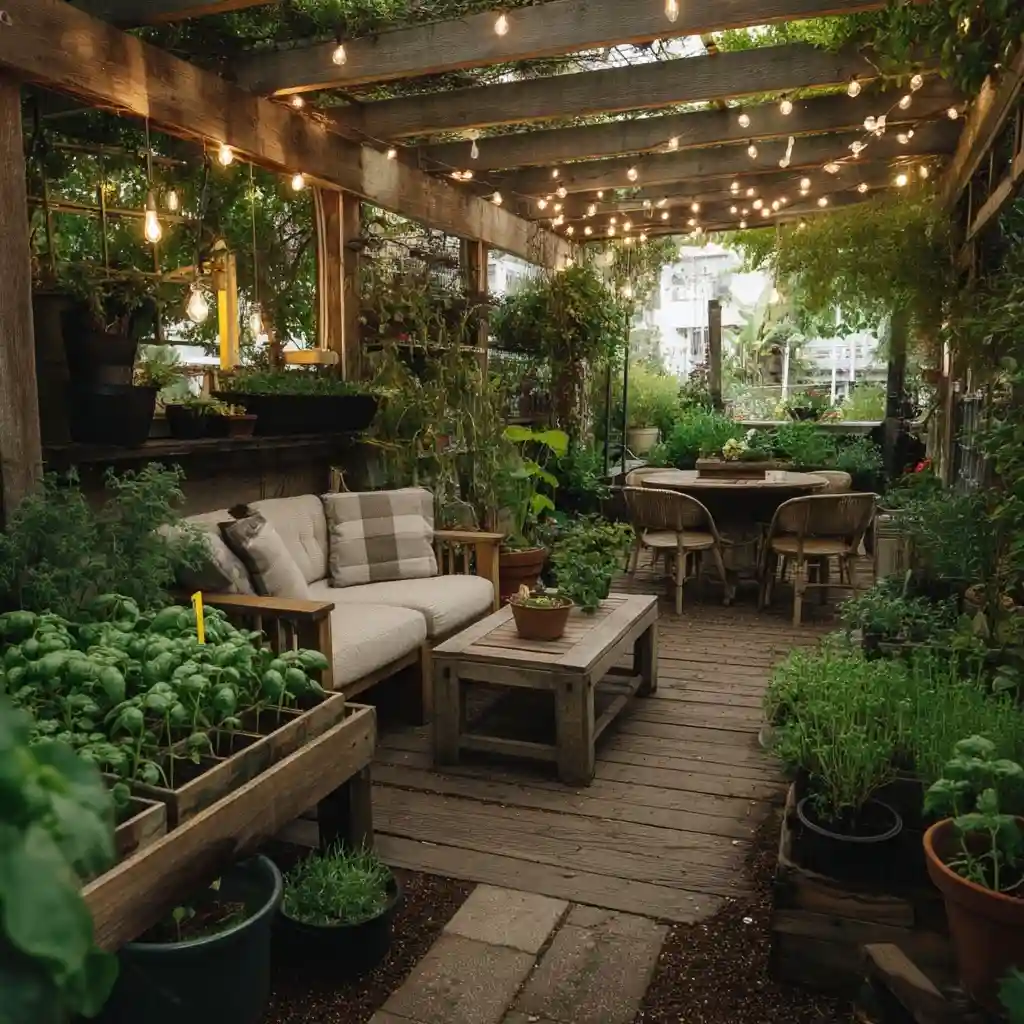
A well-planned lounge space can complement your vegetable garden design and make your garden a place to unwind as well as grow food. Choose weather-resistant furniture that can handle the elements, and arrange it near your garden beds so you can enjoy the view while you relax.
Surround the seating area with potted plants, trellised greenery, or fragrant herbs like lavender and mint to create a sensory experience. Soft textiles—such as outdoor cushions and rugs—add comfort and warmth.
For evenings, incorporate gentle lighting through string lights, lanterns, or solar-powered fixtures. A fire pit or small heater can extend your time outdoors into cooler months, making the lounge a year-round retreat.
Low-Maintenance Garden Ideas for Busy Gardeners
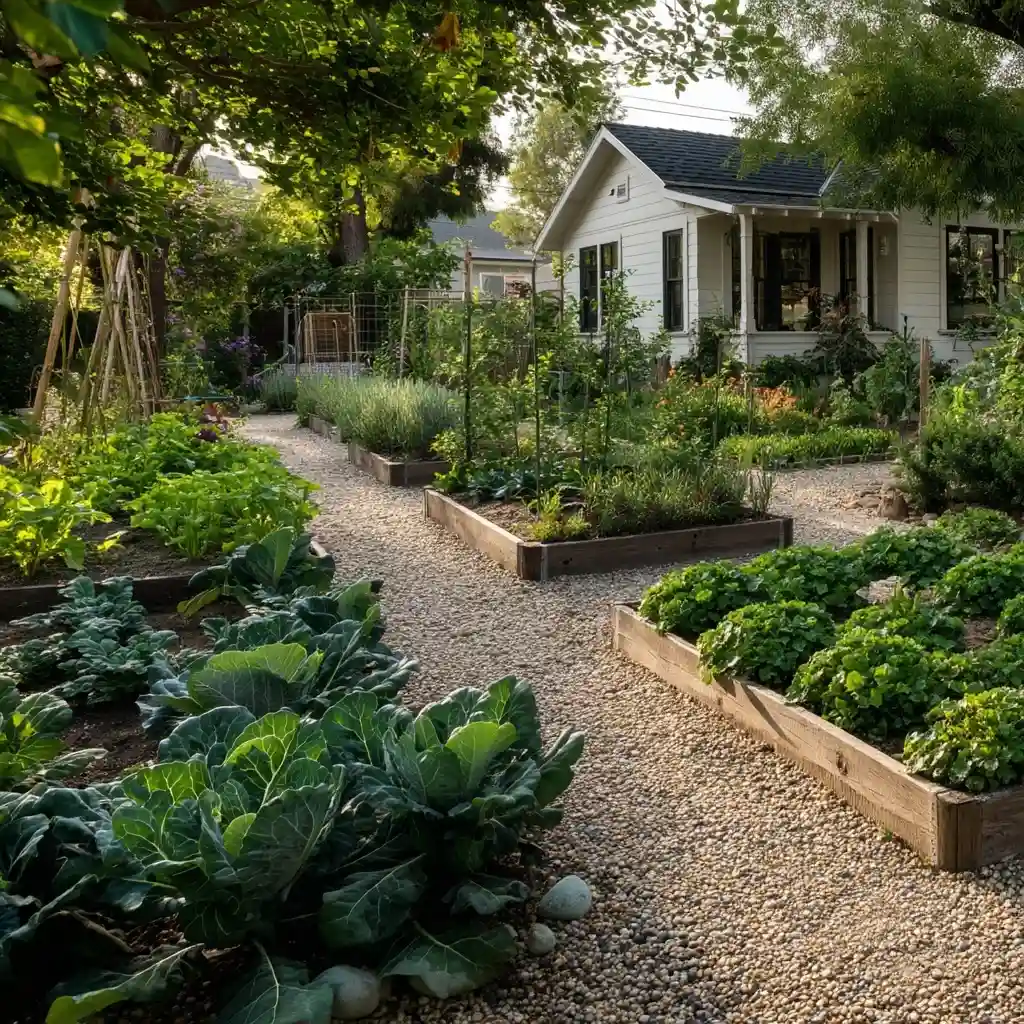
If you love the look of a thriving yard but have limited time, you can still enjoy a beautiful vegetable garden design by focusing on low-maintenance choices. Select hardy plants like perennials, succulents, or native species that require minimal care.
Raised beds and container gardens help control weeds and reduce the need for constant upkeep. Drip irrigation systems save time on watering while ensuring plants get consistent moisture. Mulching not only keeps weeds down but also improves soil health and conserves water.
Design your garden to work with nature rather than against it—group plants by water needs, choose disease-resistant varieties, and create layouts that allow for easy access during harvesting and maintenance.
Crafting a Garden That Grows With You
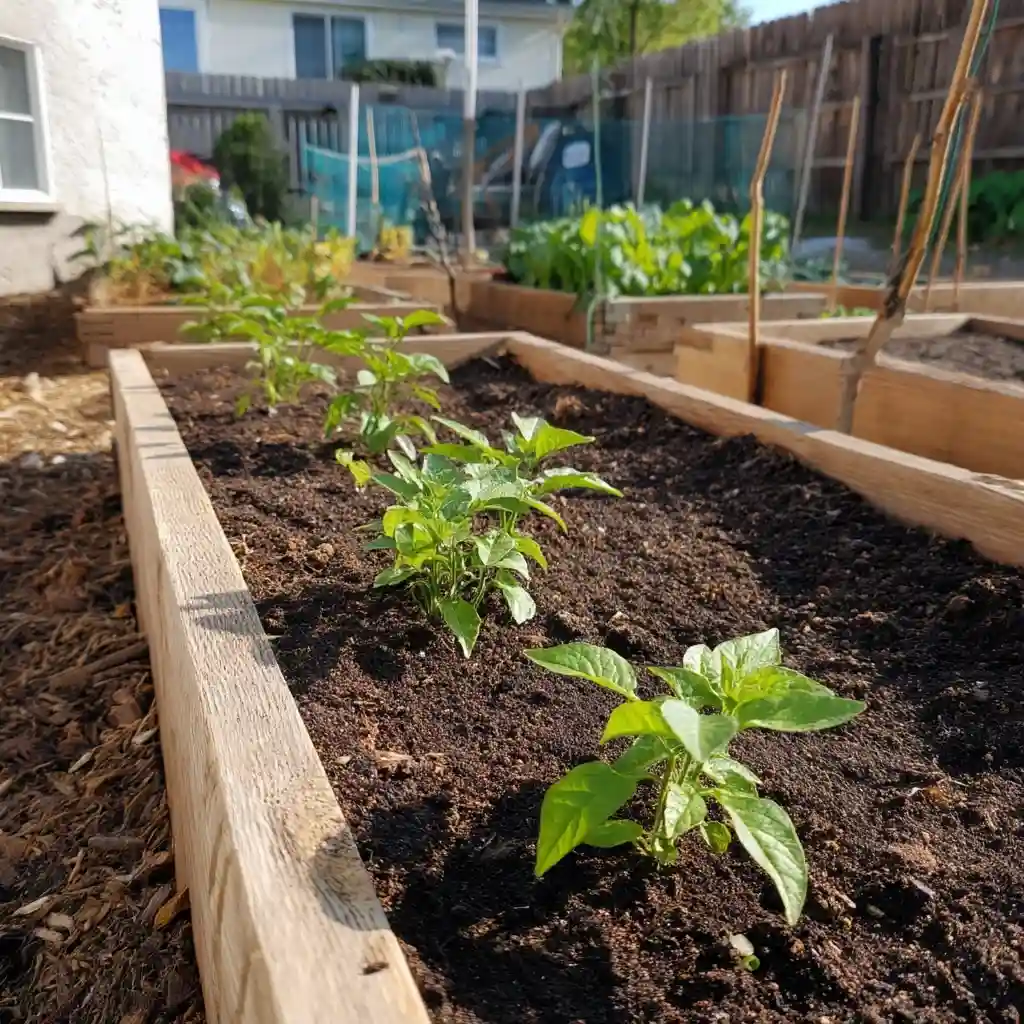
A successful vegetable garden design isn’t static—it evolves with your needs, preferences, and lifestyle. As your gardening skills develop, you may want to expand your planting areas, try new crops, or add more decorative features.
Plan your layout so it can adapt over time. Modular raised beds, movable containers, and flexible pathways make it easy to reconfigure your space. Include a mix of perennial plants for long-term structure and seasonal crops for variety and continuous harvests.
By blending aesthetics, functionality, and sustainability, you create a garden that matures alongside you, offering fresh produce, beauty, and enjoyment year after year.
Conclusion
A thoughtful vegetable garden design brings together productivity, beauty, and relaxation in one outdoor space. Whether you’re working with a small balcony or a spacious backyard, careful planning and creative touches ensure your garden is both functional and inviting. By blending edible plants with ornamental features, incorporating smart landscaping, and adapting the space as your needs change, you can enjoy a vibrant, year-round retreat right at home.
FAQ
1. What are some easy plants for a low-maintenance vegetable garden design?
Choose hardy crops like lettuce, kale, radishes, and herbs such as rosemary or thyme. These require minimal care and thrive in most conditions.
2. Can I mix vegetables and flowers in the same garden?
Yes—integrating flowers like marigolds or lavender can deter pests, attract pollinators, and enhance the garden’s visual appeal.
3. How do I make the most of a small space?
Use vertical gardening techniques, raised beds, and containers to maximize growing area without overcrowding plants.
4. How much sunlight does a vegetable garden need?
Most vegetables require at least six hours of direct sunlight per day for healthy growth and good yields.
5. What’s the benefit of crop rotation in a vegetable garden design?
Rotating crops each season prevents soil nutrient depletion and reduces the risk of pests and diseases.
🌿 Love gardening inspiration? Follow me on Pinterest for bold plant ideas, tips, and seasonal color!
More Posts
